The financial disruption caused by COVID-19 has prompted many banks to remind customers of the support they have to offer. Yet traditional banks leave a lot to be desired in the positioning and promotion of their online budgeting and financial education resources. While third-party budgeting platforms like Mint and Acorns address financial anxiety with aesthetically pleasing mobile tools, many banks are still promoting the basics of online banking and account management.
Let’s look at some recent campaigns from banks and budgeting apps, addressing key differences in messaging.
Highlighting Tools & Resources
In addition to financial education content on their homepages, traditional banks offer virtual assistants, savings tools, and mobile app features; however, these resources are rarely actively promoted in acquisition or customer communication pieces.
Ally stands out for regularly highlighting its tools and resources as differentiators, as they bolster the bank’s overall brand positioning as a customer-empowering financial institution looking out for their “financial well-being.” This email (below) offered expert advice from Ally Invest Chief Investment Strategist Lindsey Bell.

Source: Comperemedia Omni
Ally also launched a suite of online tools through which customers can manage finances and increase savings. Options include “digital envelopes” to categorize spending, establishing recurring transfers, and an easy-to-navigate mobile platform to drive usage.

Source: Comperemedia Omni
Many banks, including Chase and KeyBank, encourage in-person or virtual financial planning consultations to offer more personalized advice and develop relationships with engaged customers. While social distancing guidelines reduce branch traffic, the ability to schedule appointments offers an opportunity for safe, in-person engagements.

Source: Comperemedia Omni
Emphasizing Goals vs. Control
Traditional banks’ communications around tools and budgeting often emphasize the outcomes of savings goals (such as a mortgage or a trip) and the ability to easily manage one’s finances and accounts with online tools. Third-party apps, however, typically speak to the stresses and anxiety related to financial situations, offering users peace of mind and control.
Huntington and Wells Fargo branded savings and spend-tracking tools. Their email campaigns (below) highlighted the potential benefits of using the tools, but did not showcase the user interface as a means of attracting users.
- Click to enlarge image (Source: Comperemedia Omni)
- Click to enlarge image (Source: Comperemedia Omni)
Regional and community banks highlighted budgeting tools and advice in direct mail pieces sent to existing customers. For M&T Bank, one budgeting solution is to maintain two accounts:

Source: Comperemedia Omni
Meanwhile, control was a recurring theme among financial budgeting apps. On its website, Mvelopes markets its tools as a way to “take control of your future” and “reduce stress.” Acorns promises to help users “take control with all-in-one investment, retirement, checking, and more.”
- Click to enlarge image (Source: Comperemedia Omni)
- Click to enlarge image (Source: Comperemedia Omni)
Traditional banks can do more to empathize with customers navigating challenging financial situations or looking to develop better habits, as well as address negative feelings associated with money.
Show Your Interface
Colorful, slick user interfaces presented on mobile devices are at the core of websites and marketing materials for third-party budgeting apps. Mint and Personal Capital showcase the mobile-friendly graphics of their financial management tools in emails and on their homepages. Their copy emphasizes the easy-to-use platforms with all of a customer’s finances in one place.
- Click to enlarge image (Source: Comperemedia Omni)
- Click to enlarge image (Source: Comperemedia Omni)
As mobile-first, easy-to-use platforms are not among traditional banks’ strong suits, many are joining forces with Google to overcome this challenge. At present, banks depict their mobile app’s splash pages or menu bar in marketing material to highlight a broad range of capabilities.

Source: Comperemedia Omni
Instead, images of an app’s more valuable or specialized tools could drive interest in a mobile app’s potential value to a customer.
Comperemedia, a Mintel company, is an industry-leading competitive marketing intelligence agency. To find out more about Comperemedia’s products and services, please get in touch.



 Eric Fahey
Eric Fahey























